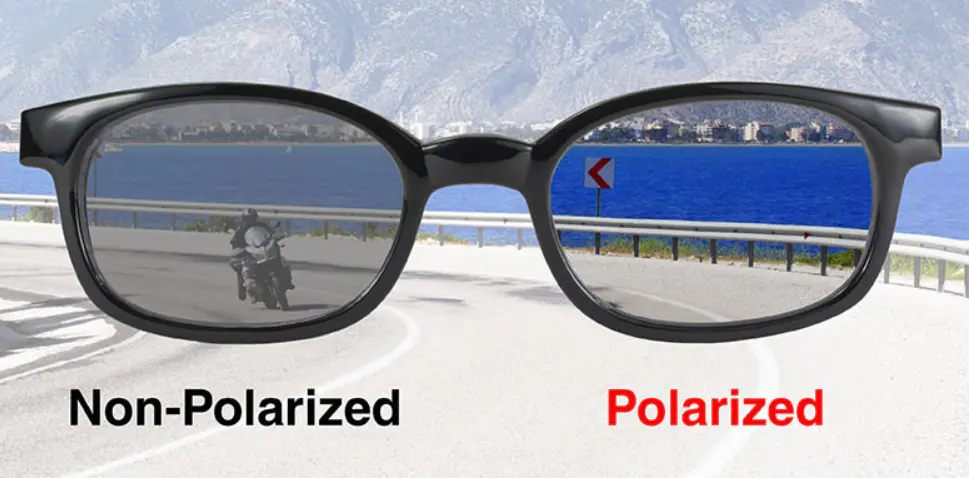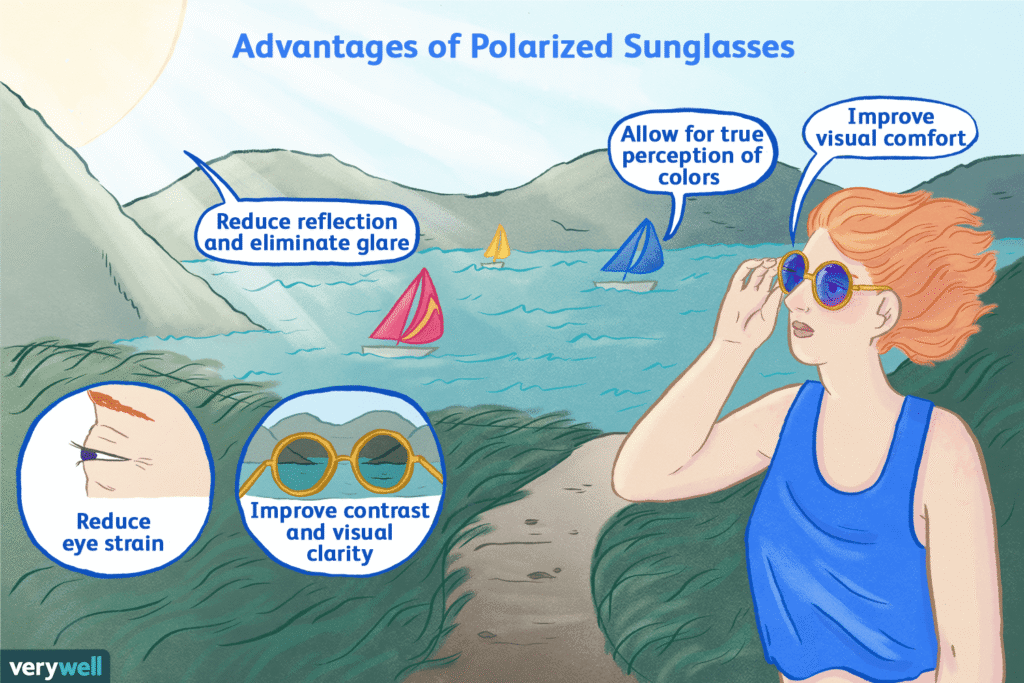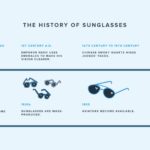In today’s world, where outdoor activities are increasingly popular and the sun’s glare is a constant presence, the importance of proper eye protection cannot be overstated. From hiking and fishing to driving and simply enjoying a sunny day, polarized sunglasses are becoming an essential accessory for those seeking comfort and clarity. Understanding what makes polarized sunglasses unique and how they work is crucial for making informed choices and maximizing their benefits. This in-depth exploration delves into the science behind polarized lenses, their practical applications, and the benefits they offer. We’ll examine the technology, compare them to non-polarized options, and provide actionable advice for choosing the right pair for your needs. This comprehensive guide empowers you to navigate the world of sunglasses with confidence and protect your eyes from harmful glare.
Understanding the Science of Polarized Sunglasses
Polarized sunglasses aren’t just another fashion statement; they offer a significant advantage over regular sunglasses by reducing glare. The key lies in the special polarizing filter embedded within the lens.

How Polarized Lenses Work
Sunlight reflects off horizontal surfaces like water, roads, and snow. This reflected light is often scattered and unorganized, creating intense glare. Polarized lenses, however, are designed to filter out these horizontally polarized light waves, allowing only the vertically polarized light to pass through. This reduction in glare dramatically improves visibility and reduces eye strain.
The Polarizing Filter Effect
Imagine sunlight as a wave. Regular sunglasses simply block some of the light waves. Polarized lenses, however, selectively block the horizontally vibrating light waves, allowing the vertically vibrating light waves to pass through. This targeted filtering significantly reduces glare, resulting in a clearer and more comfortable vision.
This difference is crucial. It’s not just about blocking light, but about controlling the direction of light waves. This specific filtering mechanism eliminates the horizontal glare components, allowing for a vastly improved visual experience.
Comparing Polarized vs. Non-Polarized Sunglasses
The difference between polarized and non-polarized sunglasses goes beyond aesthetics. The performance characteristics are significantly different.
Impact on Vision and Comfort
Non-polarized lenses offer basic UV protection, but they don’t address the issue of glare. This can lead to eye strain, reduced visibility, and discomfort, especially in bright sunlight reflecting off surfaces. Polarized lenses, on the other hand, effectively eliminate this glare, resulting in sharper, clearer vision and a more comfortable experience.
Real-World Examples
- Driving: Polarized lenses significantly reduce glare from the dashboard, headlights, and road surfaces, improving driver safety and comfort.
- Fishing: Reducing glare on the water allows for better visibility of fish beneath the surface, improving fishing success.
- Water Sports: Activities like boating and kayaking benefit greatly from the reduction in glare reflected from the water.
Comparative Data
| Feature | Polarized | Non-Polarized |
|---|---|---|
| Glare Reduction | High | Low |
| Clarity | High | Moderate |
| Comfort | High | Moderate |
Practical Applications and Benefits
Polarized sunglasses are increasingly popular across various activities and environments.
Outdoor Activities
From hiking and camping to boating and fishing, polarized sunglasses enhance visibility and comfort in outdoor settings. The reduction in glare allows for greater detail and clarity in challenging lighting conditions, leading to more enjoyable experiences.
Expert Insights
“Polarized lenses are crucial for anyone spending time outdoors,” says Dr. Emily Carter, an ophthalmologist. “They minimize eye strain and improve visual acuity, leading to a more comfortable and safer experience.”
Choosing the Right Polarized Sunglasses
Selecting the appropriate polarized sunglasses depends on your individual needs and preferences. Factors like lens material, frame style, and UV protection levels are important considerations.
Lens Material and UV Protection
Lens materials like polycarbonate, CR-39, and high-index plastics provide varying levels of durability and clarity. UV protection is essential, as prolonged exposure to harmful UV rays can damage the eyes. Look for lenses with 100% UV protection to safeguard your eyes.
Potential Challenges and Considerations
While polarized sunglasses offer numerous benefits, there are some potential drawbacks to consider.
Cost and Availability
Polarized sunglasses are typically more expensive than non-polarized options. However, the improved performance and longer lifespan often make the investment worthwhile.
Compatibility with Certain Activities
Some activities, like driving at night, might not benefit from polarized lenses. The increased clarity during the day might not be as helpful in low light conditions.
Summary
Polarized sunglasses are designed to reduce glare by filtering out horizontally polarized light. This results in improved visibility, reduced eye strain, and enhanced comfort in various outdoor settings, including driving, fishing, and water sports. Choosing the right polarized sunglasses involves considering lens material, frame style, and UV protection. While more expensive than non-polarized options, their superior performance often justifies the investment. Ultimately, polarized sunglasses provide a significant advantage for those seeking a clearer, more comfortable visual experience in bright light conditions.
Frequently Asked Questions (FAQs)
What are the main differences between polarized and non-polarized sunglasses?
The primary difference lies in the way they handle glare. Polarized lenses filter out horizontally polarized light, significantly reducing glare, while non-polarized lenses don’t. This results in a sharper, clearer view and reduced eye strain with polarized lenses, especially in bright sunlight.
How can I tell if sunglasses are polarized?
A simple test involves holding the sunglasses up to a reflective surface, like a body of water or a road. Rotate the sunglasses. If the glare intensity changes, the sunglasses are polarized. Another way is to check if they have a small label or description indicating their polarization.
Are polarized sunglasses good for driving?
Yes, polarized sunglasses can significantly improve driving safety and comfort by reducing glare from the road, headlights, and other surfaces. This enhanced visibility can help drivers see better in bright sunlight and potentially reduce eye strain.
Are there any situations where polarized sunglasses are not recommended?
While generally beneficial, polarized sunglasses might not be ideal for night driving or very low-light conditions. The increased clarity in bright light may not be as helpful in these situations. Other specific scenarios can also be considered, depending on the activity.
How do I care for my polarized sunglasses to maintain their quality?
Proper care is essential to maintain the quality of your polarized sunglasses. Avoid harsh cleaning solutions. Gently wipe them with a microfiber cloth. Store them in a protective case to prevent scratches. Regular cleaning and storage can significantly extend the lifespan of your polarized sunglasses.



